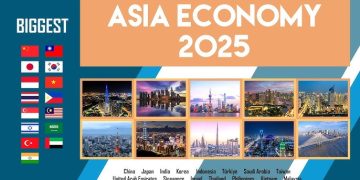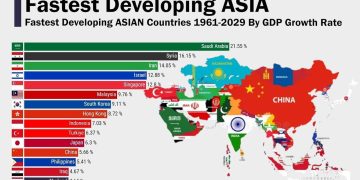1. Introduction: The New Geography of Trade
As 2025 progresses, transatlantic trade—linking Europe and the United States—faces a period of strategic recalibration. The post-pandemic boom, fueled by pent-up demand and stimulus measures, has given way to more cautious growth. Simultaneously, global disruptions—from geopolitical tensions to supply chain bottlenecks—have highlighted vulnerabilities in long-established trade networks.
This article examines the current dynamics of transatlantic trade and supply chains, analyzing how businesses, governments, and investors are adapting to a world characterized by uncertainty, regulatory divergence, and technological transformation.
2. Trade Flows and Recent Performance
Recent data show that U.S.-EU trade volumes remain robust, but growth has slowed:
- Goods Trade: Merchandise exports and imports have expanded modestly, driven by machinery, chemicals, and high-tech products. However, energy imports remain volatile due to geopolitical factors.
- Services Trade: Financial, professional, and digital services continue to grow, particularly in software, consulting, and cloud-based solutions.
- Trade Imbalances: Persistent deficits in certain sectors, particularly U.S. imports of European manufactured goods, have drawn political attention on both sides of the Atlantic.
The overall pattern reflects a transition from sheer volume expansion toward value-added, resilient, and strategically aligned trade.
3. Supply Chain Vulnerabilities
The past five years have exposed weaknesses in global supply networks:
- Geopolitical Tensions: U.S.-China competition and the Russia-Ukraine conflict have disrupted energy and raw material flows.
- COVID-19 Legacy: Pandemic-induced delays, container shortages, and port congestion persist intermittently.
- Energy and Logistics Costs: Rising fuel and shipping costs directly affect production and distribution decisions.
These vulnerabilities have prompted firms to rethink sourcing strategies, diversify suppliers, and localize certain production steps.
4. Reconfiguration and Regionalization
A notable trend is the regionalization of supply chains:
- Nearshoring: U.S. and European companies are bringing production closer to home markets to reduce transit risks.
- Strategic Partnerships: Alliances across the Atlantic, such as joint ventures in advanced manufacturing, aim to mitigate geopolitical exposure.
- Digital Supply Chains: AI, predictive analytics, and blockchain are increasingly deployed to improve transparency and efficiency.
The result is a more resilient, though potentially costlier, transatlantic trade ecosystem.
5. Policy and Regulatory Influences
Government actions significantly shape trade dynamics:
- U.S. Industrial Policy: Legislation like the CHIPS Act incentivizes domestic production of semiconductors, affecting transatlantic component flows.
- EU Green Deal: Environmental regulations, carbon border adjustments, and renewable energy standards influence both production methods and trade competitiveness.
- Tariffs and Trade Disputes: Selective tariffs remain a source of friction, particularly in steel, aluminum, and technology sectors.
Companies must navigate a complex regulatory environment while balancing efficiency and compliance.
6. Investment Implications
Supply chain reconfiguration presents investment opportunities:
- Infrastructure: Ports, logistics hubs, and energy grids require modernization.
- Technology: Automation, AI-driven logistics, and cybersecurity for supply chains are high-growth sectors.
- Green Supply Chains: Sustainable sourcing, carbon-neutral shipping, and circular economy initiatives attract investor interest.
Investors increasingly evaluate not just financial returns but strategic resilience when allocating capital in transatlantic supply chains.

7. Sectoral Impacts
Different sectors experience varying impacts:
- Automotive: Europe-U.S. vehicle supply chains face semiconductor constraints, pushing manufacturers toward vertical integration.
- Pharmaceuticals: Active ingredient sourcing and regulatory compliance drive reshoring efforts.
- Consumer Electronics: Regionalization reduces reliance on Asian manufacturing, but cost pressures remain high.
Each sector balances efficiency, risk, and compliance in distinct ways.
8. Geopolitical and Strategic Considerations
Transatlantic trade is not purely economic; it is increasingly strategic:
- Technology Sovereignty: Both Europe and the U.S. aim to maintain leadership in AI, semiconductors, and advanced manufacturing.
- Alliances and Trade Blocs: NATO-aligned economic coordination, digital trade agreements, and sanctions enforcement influence trade decisions.
- Risk Mitigation: Companies hedge against political, financial, and operational risks, using scenario planning and flexible supply chains.
Economic decision-making now mirrors national security considerations.
9. Future Outlook: Resilience as a Competitive Advantage
Looking ahead, successful transatlantic trade will hinge on resilience:
- Diversified Supply Networks: Companies with multi-region sourcing will outperform those reliant on single-country dependencies.
- Digital Integration: AI and data analytics enhance forecasting, inventory management, and rapid adaptation to shocks.
- Sustainable Practices: Green and ethical sourcing will increasingly define market access and competitiveness.
Firms and investors that embrace these principles are likely to navigate uncertainty successfully, while those clinging to outdated models may face disruption.
10. Conclusion
Transatlantic trade and supply chains in 2025 are at a pivotal juncture. Longstanding reliance on global efficiency is giving way to a focus on resilience, strategic alignment, and technological integration.
Policymakers and business leaders must recognize that competitiveness is no longer purely about cost minimization. It encompasses adaptability, risk management, and the ability to thrive under uncertainty.
In this era, the transatlantic economic partnership remains vital—not just as a conduit of goods and services, but as a strategic framework for sustained prosperity.





































